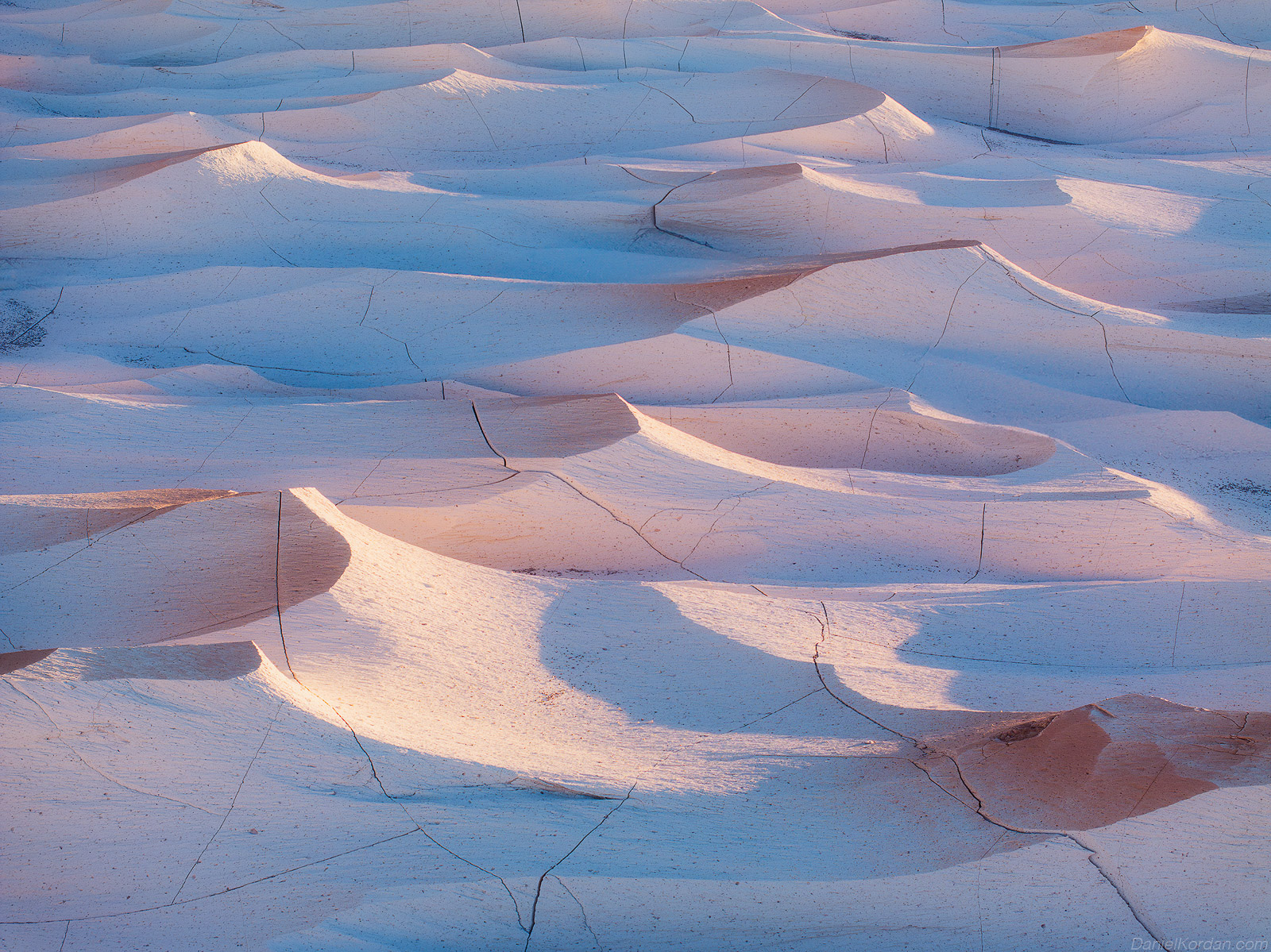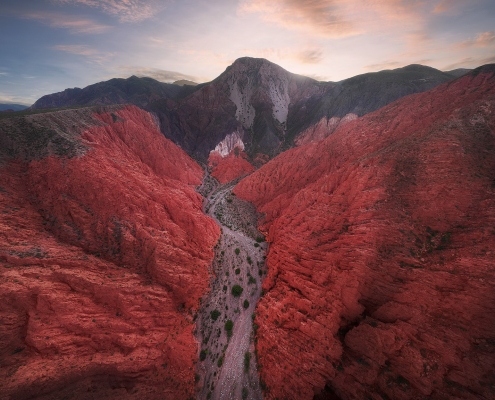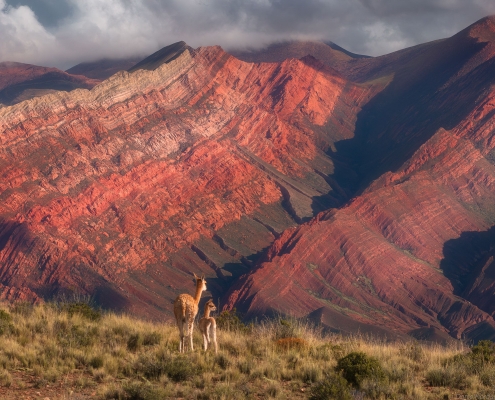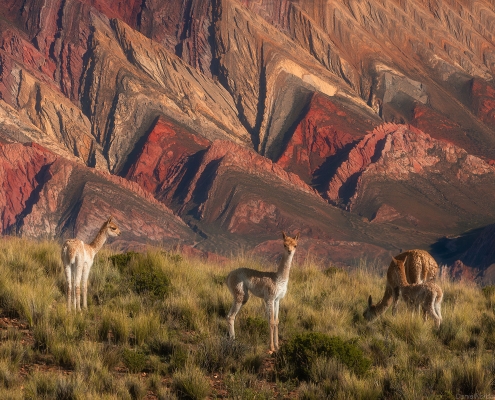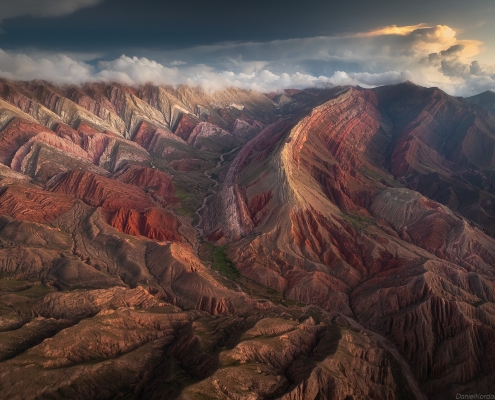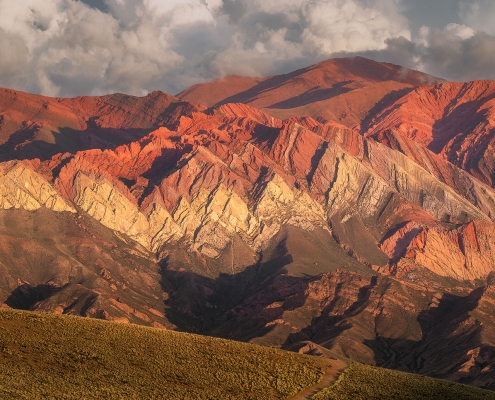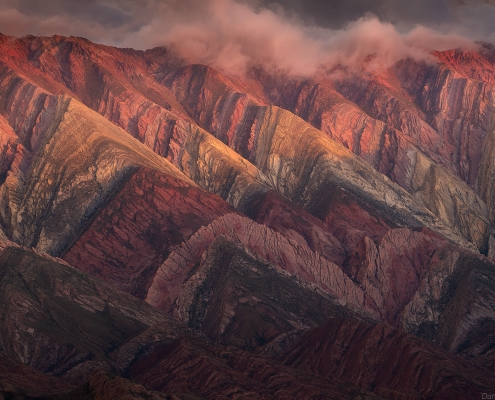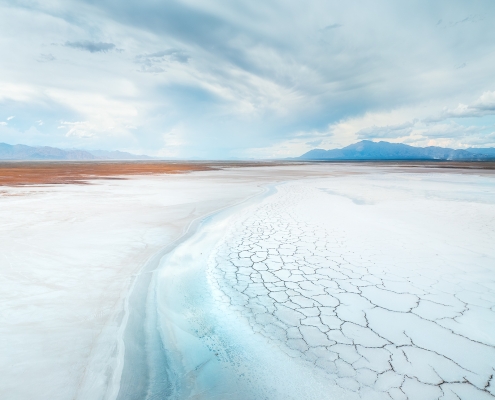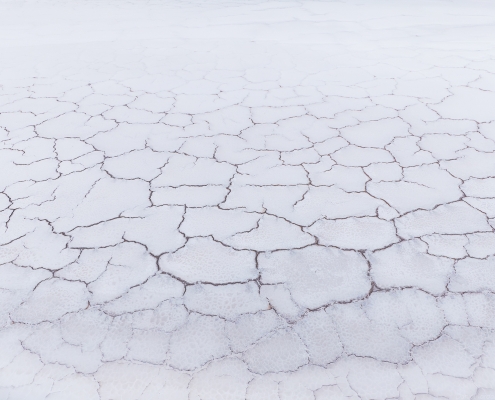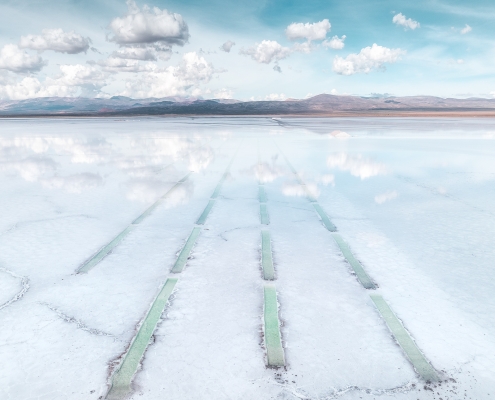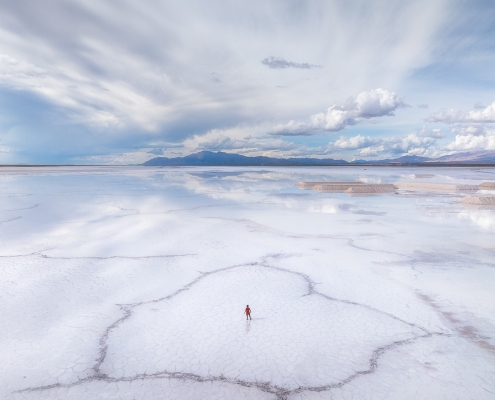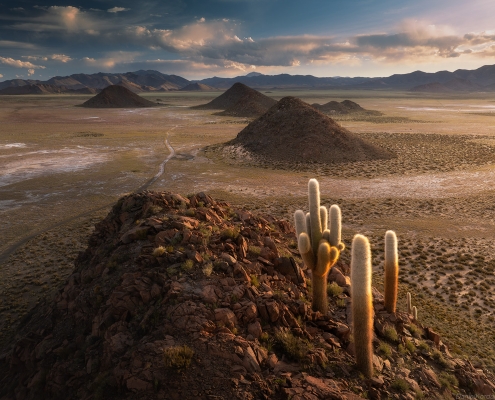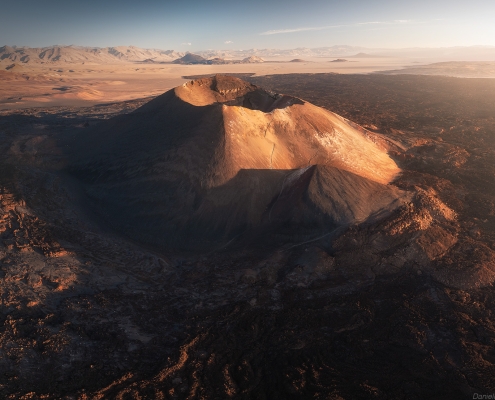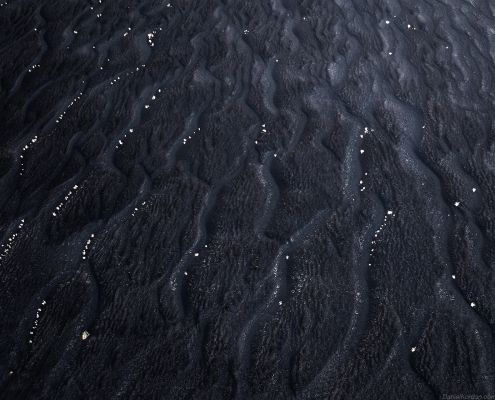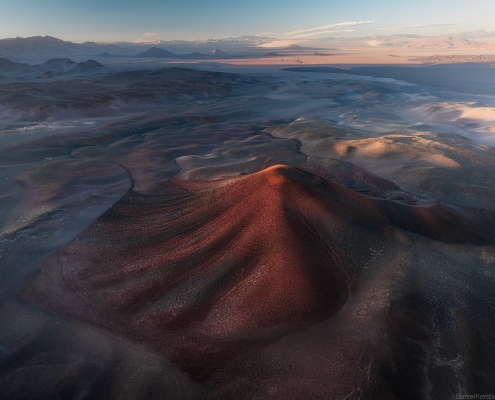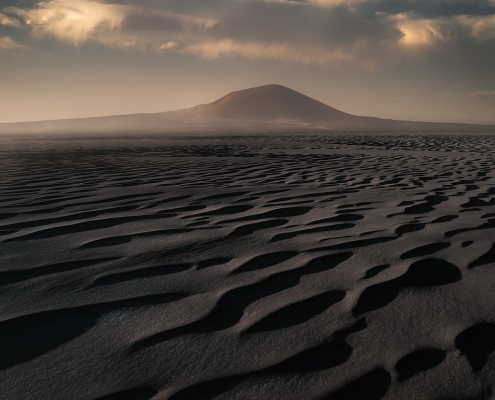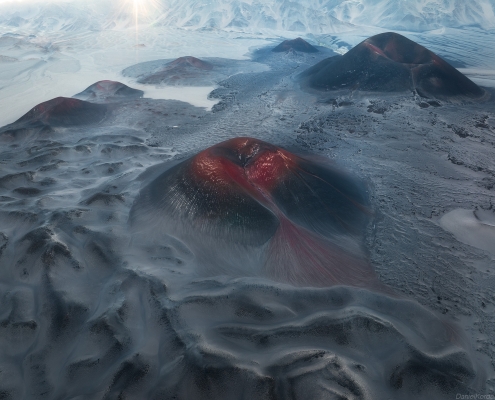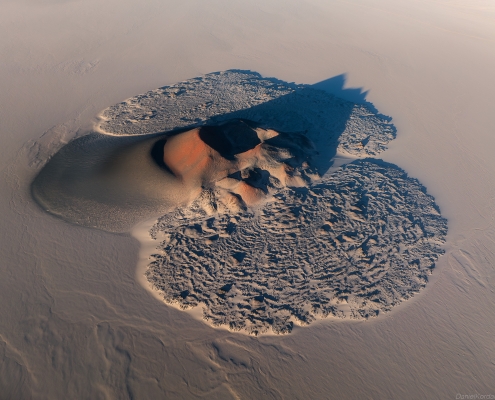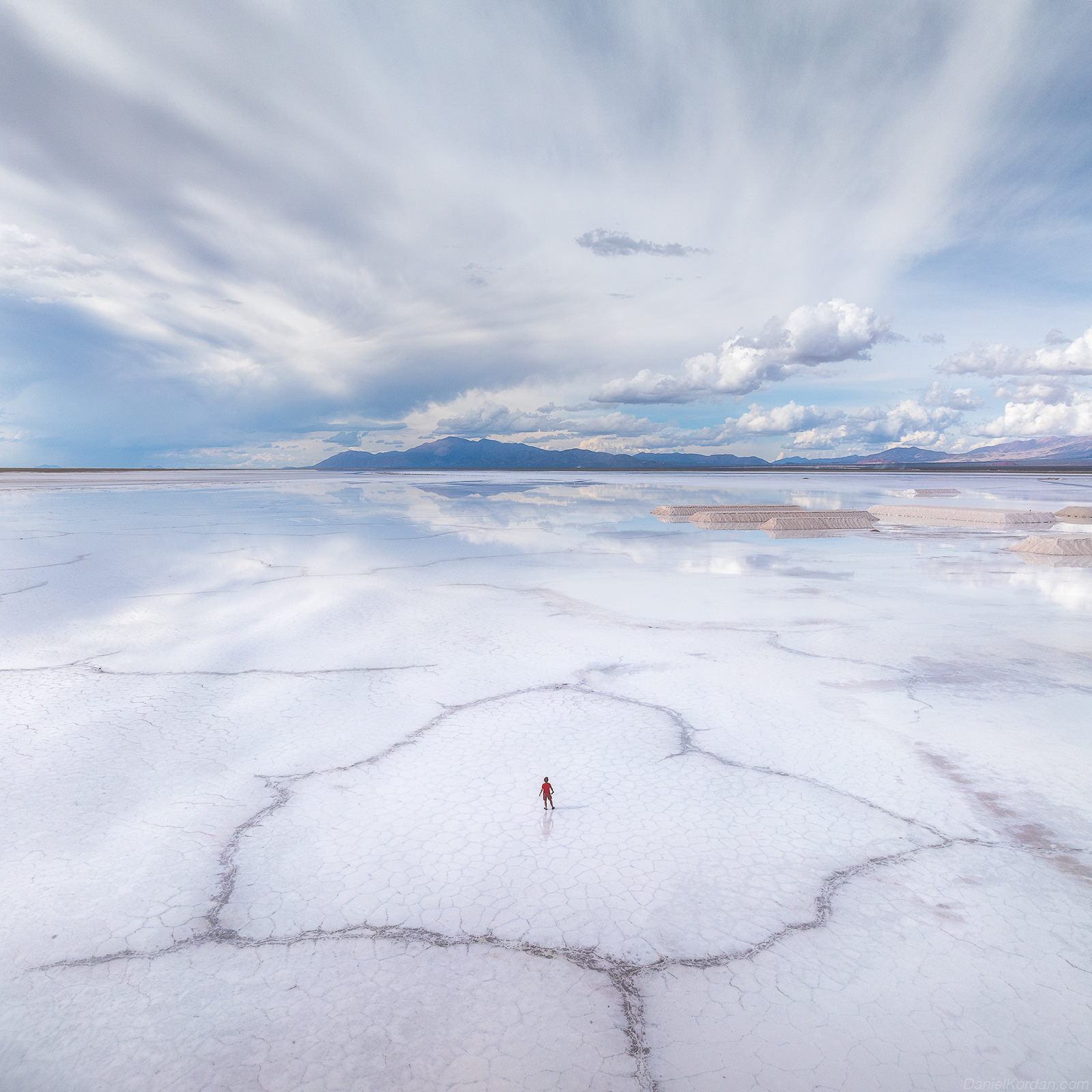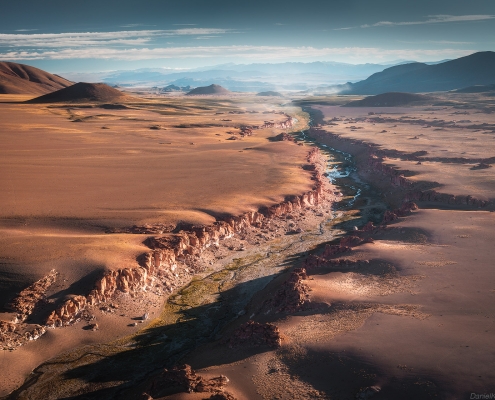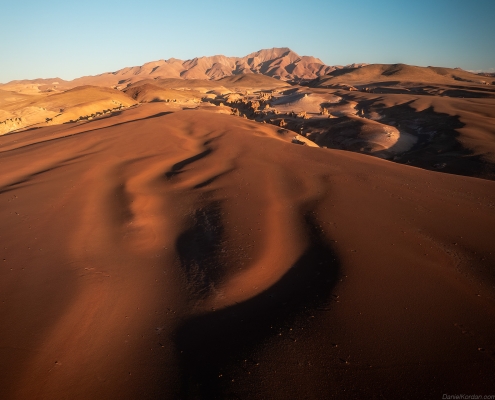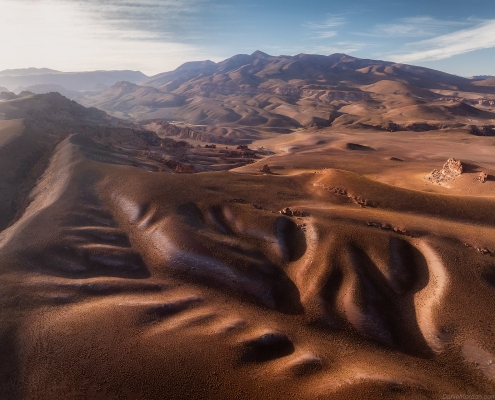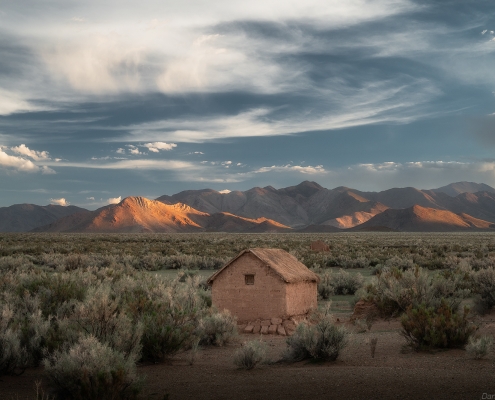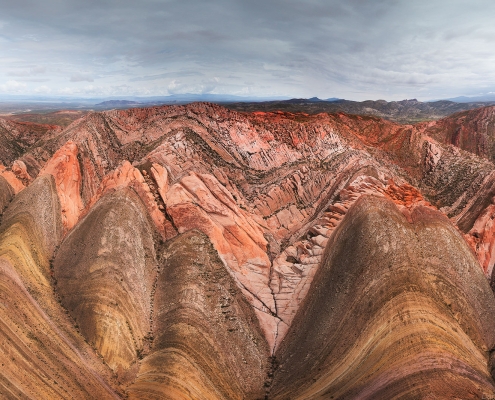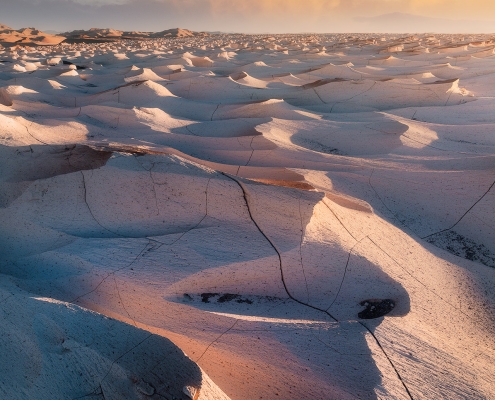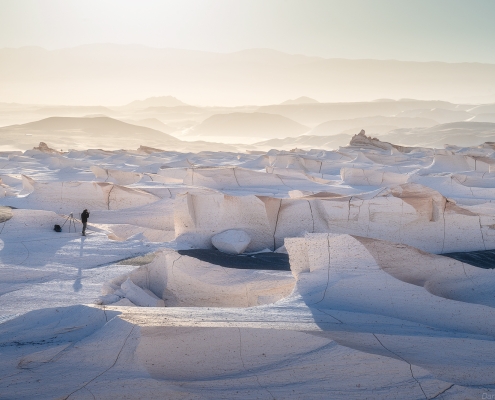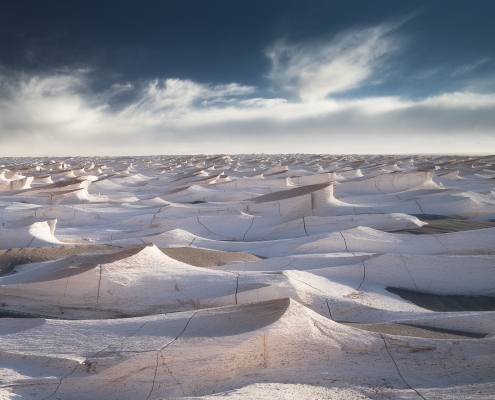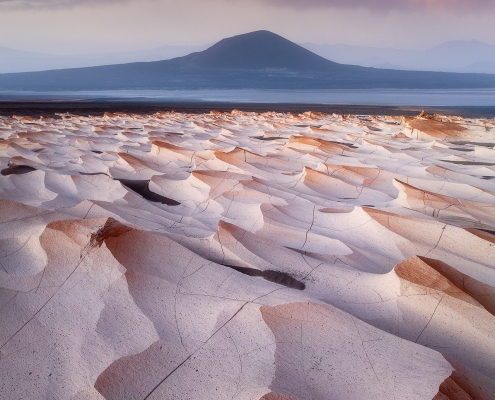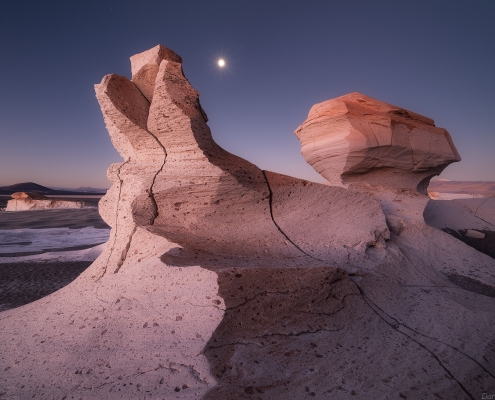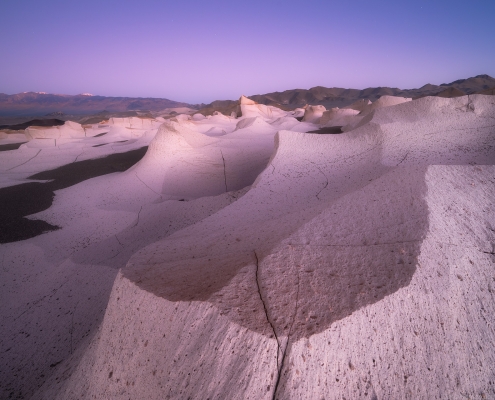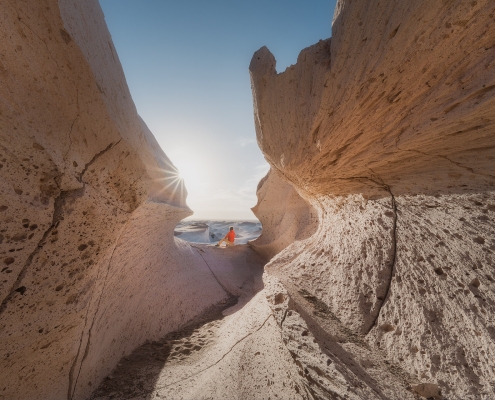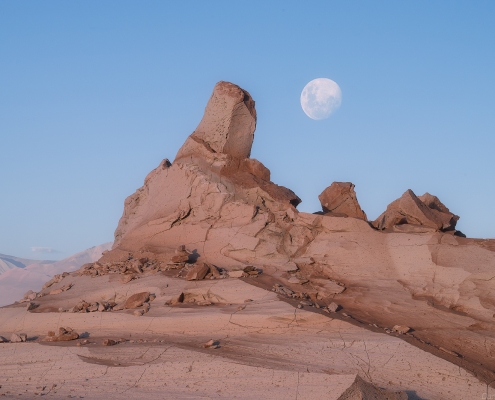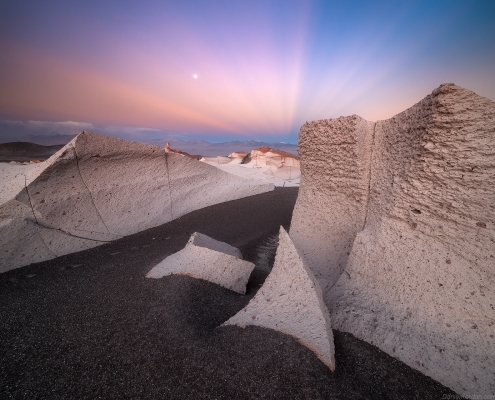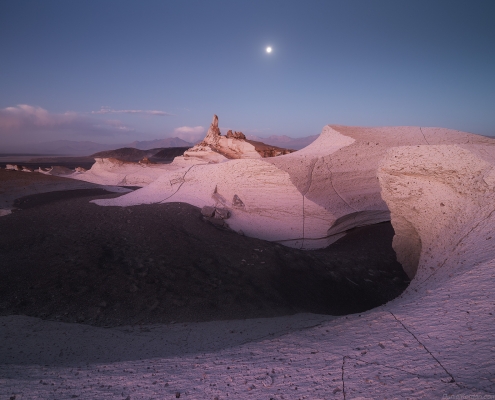Puna Atacama is the desert region in Argentina’s remote northwest. No need to fly to Mars. Part of it’s spirit is definitely located here on Earth in Puna Atacama. Landscape with mountains like rainbows, salt flats, volcanoes, pumice fields. These views seem to be from Dali painting. Ideal place for abstracts, to experiment with minimal compositions and night photography. The place rarely visited by photographers, remote and desolate. If you wish to explore Puna with me – you are very welcome to join this photography expedition! See the itinerary below and fill in sign up form to join.
15-24 March, 2025 – guided by Ossian Lindholm
Day 1, 15 March
Our adventure begins in Salta, a little town just two and a half hours by airplane from Buenos Aires. I recommend Aerolineas Argentinas 1450 with arrival 10:35 a.m. from Buenos Aires to Salta. At 11:00 a.m. we start driving towards Purmamarca. Please note that we must start no later than 11:00. Salta elevation is 1152 m above sea level. For sunset we will visit colorful mountains north from Purmamarca. After sunset we drive back to our hotel at Purmamarca (2324 m). You may want to arrive a couple of days before and acclimate yourself!
Hotel Marques de Tojo in Purmamarca
Day 2
We wake up early today and drive to Salinas Grandes for sunrise (3500 m). These salt flats are located in Jujuy province and included in the list of top Argentina Natural Wonders. We will be here in the dry season – looking for amazing textures and also taking photos of conuses and pools of salt mines. From our sunrise location we head via San Antonio de los Cobres towards Desierto del Laberinto for sunset. Along the way via Tolar Grande we will cross crossing one of the interesting attractions: the railway track that Richard Maury constructed in the early 20th century. It is located on elevation of 3508 m above the sea level. We will also stop at the forest of giant cacti. Most of them are more than 100 years old. They are growing very slowly, just a couple centimeters per year. The barren mountains with all possible textures and shades of red outside Tolar Grande is the area known as Desierto del Laberinto or the Labyrinth Desert. Labyrinth Desert looks like pure martian landscape! Totally unearthy scene! We settle down at Hotel Casa Andina for next 2 nights.
Day 3
We continue our “martian” explorations. Here we can also observe the surreal volcanic landscapes of Puna.
Day 4
We start our day from sunrise at Salar de Arizaro. It is 1,500-square-km salt flat located at 3500 m elevation. Salar de Arizaro is the 6th largest salt flat on our planet. The region is rich in salt formed around 5 to 10 million years ago. We continue the loop via the North of Argentina by heading towards Antofalla. Antofalla is a 6409-m-high Argentinian stratovolcano west of the Salar de Antofalla. We will stay at a local house as guests, exploring landscapes that look like painter’s palette – different red, green colored mountains and pools.
Day 5
We continue exploring Antofalla area including Antofalla Salt Flat for sunrise. Set in on the edge of the salt pan, this small village has little connection to civilization. It is one of the most isolated spots in Argentina. The afternoon we drive through the beautiful mountains of Quebrada de Calalaste. We drive further down the other side of the range into the settlement called Antofagasta de la Sierra. Finally back from Mars! Landscape is changed here: you can find little streams and plants around this area.
Overnight in local hosteria.
Day 6
Bright blue lagoons and several volcanoes around Antofagasta de la Sierra will be a perfect subject for sunrise! After sunrise we drive to El Peñon and settle down in local hosteria for next 3 nights. At sunset we visit El Peñon Clay fields. El Peñon has altitude of 11,000 feet (2100 m). It is an adobe village which is inhabited by only 180 people. Overnight at Hostería el Peñon
Day 7
We will photograph at the edge of Laguna de Carachi Pampa. Many pink flamingoes walking along the shores feeding in the lake waters. The bright red water gets water from rich soil minerals. Bright green algae surrounds the lake giving the landscape some insane intense colors. You’ll see a black lava that surrounds volcanoes on the background.
Hostería el Peñon
Day 8
This day we devote for a stunning nature phenomenon – Campo de Piedra Pómez – Pumice stone fields. The giant labyrinth feet was created by a strongest volcanic explosion. The ash crystalized immediately after explosion, and while cooling it was changed to the porous pumice rocks. With time erosion including strong Atacama winds has formed these incredible shapes like sculptures. Another highlight on the way to Campo de Piedra Pómez is the white sand dune. We will visit and photograph the dune before we return back to hotel.
Hostería el Peñon
Day 9
Today is the long day driving back to Salta. We give our drivers some rest skipping sunrise because we are driving back to Salta around 500 km. Arrive around 8 p.m. and settle in hotel in Salta.
Day 10, 24 March
Departure day. You are free to choose any flight back to Buenos Aires.
For booking: please inquire sending mail at Mail@danielkordan.com or send request via form below the page.
Price: 6900 USD
Included in the price:
– All transfers (jeeps, including drivers’ services, gasoline fees etc)
– Lodging in hotels twin rooms
– All meals
– Instructions by professional English-speaking guide
– Local photographer guiding
Not included in the price:
– Airfare to and from Salta airport
– Taxi from Hotel to Airport on day 10
– Visas (if applicable)
– Single supplement (750 USD)
Difficulty:
All locations are reachable by car, no hiking involved. The only difficulty might be elevation gain, but we are always below 3600 m which is ok for most of people. If you feel you need extra time to acclimate arrive 2-3 days earlier to Salta.
Tour leader – Ossian Lindholm
Ossian Lindholm, a renowned nature photographer from Tucumán, Argentina, has spent decades capturing the pristine beauty of his homeland. Trained as an agronomist, Ossian transitioned from a career in science to pursue his deep passion for nature through photography, teaching, and documentary filmmaking. His work focuses on preserving and sharing the landscapes, nature, and culture of Argentina in their most untouched forms.
Ossian has published five books, 14 calendars, and leads photography courses and expeditions across Argentina. For the past four years, he has hosted Travesia Fotograficas, a popular weekly TV documentary that uses images, words, and music to inspire viewers to love and protect their natural surroundings.
Born in Tucumán and raised in Buenos Aires, Ossian’s love for exploration was nurtured by his parents, both avid amateur photographers and travelers. By age seven, he was captivated by Argentina’s landscapes and began carrying a camera everywhere. As a teenager, he turned photography into a serious pursuit, setting up a black-and-white photo lab at home and taking on freelance work at family events.
Inspired by National Geographic, Ossian developed a deep connection to nature photography. After earning his degree in agricultural engineering, he worked as a scientist before fully dedicating himself to photography in 1998. Since then, he has guided photography tours, collaborated with biologists, and published his first photography calendar in 2001. His mission is clear: “Para Conservar, primero hay que Conocer” (“To conserve, first you must know”).
Ossian’s work is driven by a profound belief in the sacredness of nature and humanity’s symbiotic relationship with the Earth. Through his photography, teaching, and filmmaking, he strives to convey this message, inspiring others to cherish and protect the natural world. His life’s calling is to use his craft to foster a deeper connection between people and the environment.

